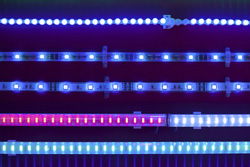An enlightened take on light-emitting diode production
White and blue LEDs are typically produced on wafers made of silicon carbide (SiC) or sapphire (aluminium oxide (Al2O3)). The most expensive and time-consuming steps are lapping and polishing. Lapping to remove surface scratches and saw marks takes place immediately after cutting the ingots into wafers. Polishing comes next, usually with two or three recursions, on very high-precision machines. Replacing lapping with conventional grinding would reduce processing time and enable better surface quality, consequently reducing time required for polishing. To date, this has been difficult to accomplish because the grinding of sapphire wafers is subject to large variability and there is no direct way to monitor process parameters at the contact zone between the grinding wheel and the wafer. Partners working on the EU-funded project THERMOGRIND solved this issue with innovative technology to measure and control grinding temperature, one of the key variables for process control. Researchers exploited sapphire's optical transparency to infrared (IR) radiation by using sapphire to form the core element of an IR-transparent hollow spindle wafer-clamping system (vacuum chuck). A sensor detects IR radiation from the sapphire wafer that is transmitted through the chuck, enabling optical access to any preferred position on the wafer. After analysing in detail the dependency of the temperature signals on various parameters and operating conditions, scientists determined thermal control criteria for the grinding process. From the correlations, they developed the machine tool integrated loop control system. THERMOGRIND scientists have developed an innovative solution to the problems of expense and time required for the production of blue and white LEDs on sapphire wafers. EU small and medium-sized enterprises (SMEs) will now be in a strong position to compete with foreign manufacturers in this huge global market. In addition, the modular technology should boost sales of individual components for other applications by the partner SMEs manufacturing them.



